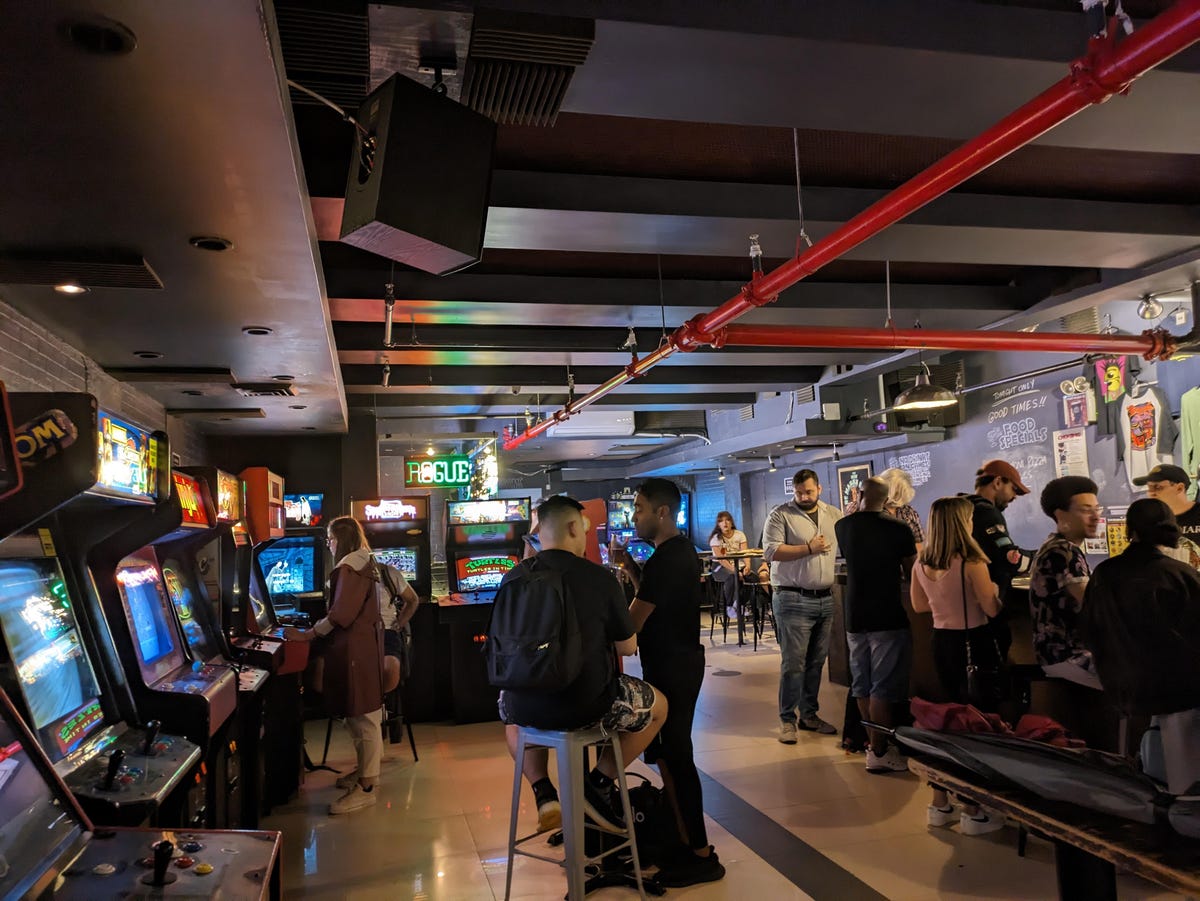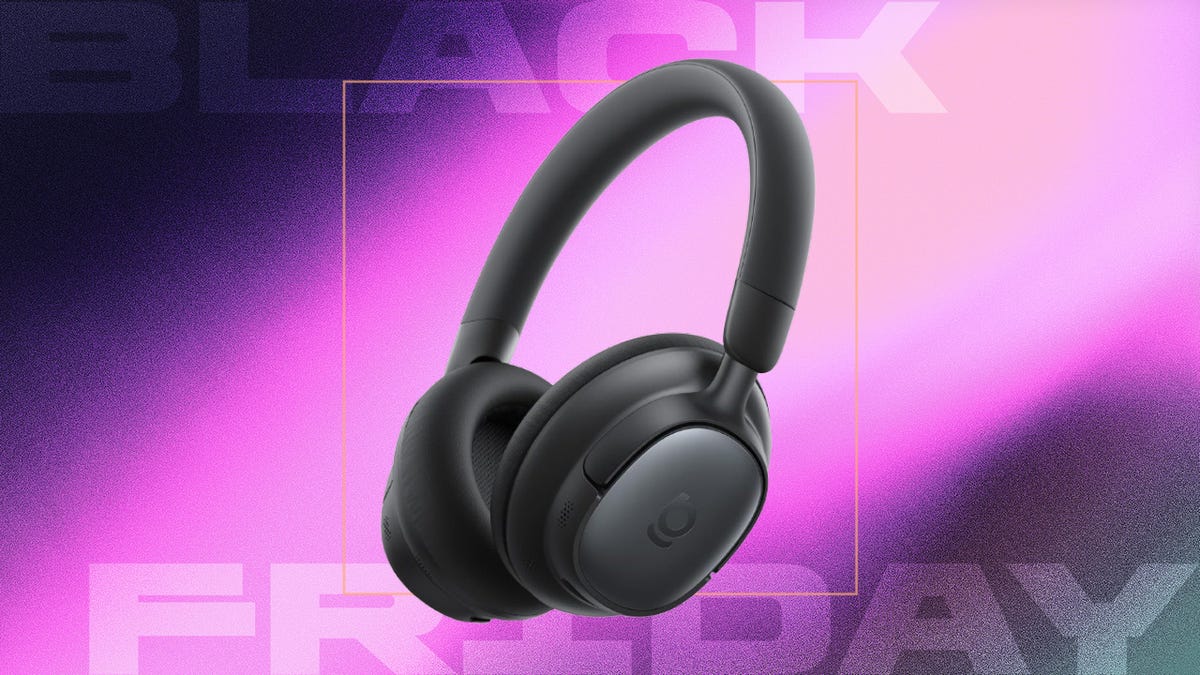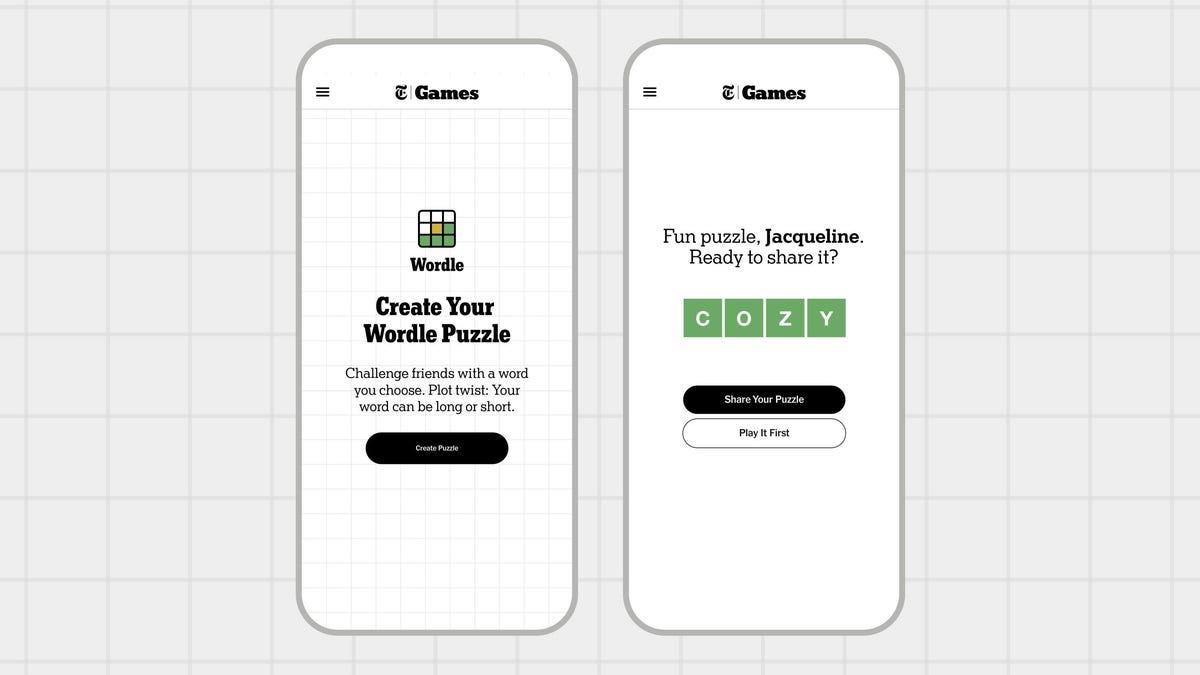Technologies
Google Pixel 7A: 3 Months Later, It’s Still a Great Affordable Pick
The Pixel 7A still shines for its design and camera. But if you can wait, it’s worth seeing what the Pixel 8 has to offer.
When I reviewed the Pixel 7A back in May, I praised it for its sleek design, great cameras and resemblance to the pricier Pixel 7. Revisiting the phone three months later has only reinforced those impressions — along with reiterating other pros and cons about the device.
Google has a strong track record for updating the software on its Pixel phones years after their release with new features and functionality, which keeps its devices feeling fresh. And the same should hold true for the Pixel 7A. But since we’re likely just a couple of months away from Google announcing its Pixel 8 lineup, the big question is whether it’s worth buying the Pixel 7A now or whether you should wait for the Pixel 8.
Read more: Pixel 8: All the Major Rumors About Google’s Next Phone
While we don’t know what to expect from Google’s next-generation phone, the answer will largely depend on the Pixel 8’s price, and whether it comes with any compelling new features. Google typically announces its next Pixel line in October, and may drastically markdown the Pixel 7 series in the lead up which could make it a better buy than the 7A.
I generally recommend waiting until Google holds its next major product launch before making a purchasing decision. But if you need a new Android phone now and are eyeballing the Pixel 7A, rest assured that you’ll get a great camera and useful software features in a package that feels just right: Not too big and not too small.
Screen is just the right size, but too dim
The Pixel 7A’s 6.1-inch size feels like the perfect balance between portability and spaciousness. It’s big enough to comfortably read news stories, make video calls and scroll through social media, but doesn’t feel like a burden when I hold it.
Samsung does a better job at cramming a giant screen into a compact design. Take the Galaxy S23 as an example which has the same-sized screen but feels smaller to hold — although at $800 it’s significantly more expensive than the Pixel 7A.
While I appreciate the Pixel 7A’s size, the screen looks too dim outdoors. When I used the Pixel 7A outside, even on an overcast day, I had to boost the screen’s brightness all the way up to comfortably view it. The $449 Galaxy A54 5G has a 6.4-inch display that can get brighter than the Pixel 7A’s, but it’s worth noting that my colleague Andrew Lanxon found the Samsung phone compared less favorably to Google’s Pixel phones in most other respects.
Three months later, I still enjoy the Pixel 7A’s sharp design. I’ve courageously been using it without a case, and the «snow» white model has stayed surprisingly clean. After years of experimenting with the Pixel’s design language, I think Google finally found the right look for its phones. Google introduced the Pixel’s current aesthetic, which is sleek and minimalist but draws attention to the camera, with the Pixel 6, and I hope it sticks with this direction.
Battery life is OK
The Pixel 7A’s battery life is adequate but not noteworthy, although it’s about on par with the more expensive Galaxy S23 series. On a full charge, the Pixel 7A was able to get me through a full day with some breathing room in the evening. On a typical work day, which for me involves taking my phone off its charger at around 8 or 8:30 a.m. and going to bed between 11 and 11:30 p.m., the Pixel 7A had 46 to 56% of its battery left by the time I turned out the lights.
That’s enough to make me feel at ease if I was going out after work and didn’t have time to plug in my phone at my desk. But like most phones, you wouldn’t want to forget to charge it overnight.
The Pixel 7A also performed better than the entire Galaxy S23 lineup on CNET’s three-hour battery test, which involves streaming the same video on YouTube continuously and measuring the battery level at each hour. The Pixel 7A had 85% of its battery left after the third hour, while the Galaxy S23 had 81%, the S23 Plus had 84% and the S23 Ultra had 82%.
That may sound impressive for a phone that’s so much cheaper than Samsung’s flagship lineup. But there are a few important caveats to consider. Samsung’s phones have brighter displays with higher refresh rates compared to the Pixel 7A.
Google’s phone also performed slightly worse than the Galaxy S23 Plus and Ultra, and about the same as the Galaxy S23, on a separate battery test meant to simulate real-world usage. After this 45-minute test, which involves playing games, streaming video, browsing social media and making a video call for 10 minutes, the Pixel 7A had 92% of its battery left. The Galaxy S23 had 91%, while the Plus model had 95% and the Ultra had 94%.
All told, the Pixel 7A has about average battery life, which more or less lines up with my findings when I reviewed it in May.
The camera takes great photos for the price
The Pixel 7A’s 64-megapixel main camera takes sharp and colorful photos, as I noted in my original review. There’s also a 13-megapixel ultrawide camera for capturing shots from a broader field of view.
It doesn’t compare to the camera you’d get on a high-end phone like the Pixel 7 Pro or Galaxy S23 Ultra, and it shouldn’t since those phones are significantly more expensive. But the Pixel 7A’s photos still included an impressive amount of detail and contrast. In the photo below, you can even spot grains of salt on the shishito peppers.

And in the photo below, the shadows visible in the flower petals really makes the image pop.

Still, the Pixel 7A struggled with sharpness and clarity when photographing groups of people in a dim indoor setting. Take a look at the photo below, which was taken in Barcade in New York. The glowing neon sign and Ninja Turtles logo on the screen of an arcade cabinet are impressively sharp, but all the people in the scene look blurry.

Software updates bring new features
I’ve come to appreciate Google’s tendency to release new features for its Pixel phones over time. Google calls these updates Feature Drops, and the Pixel 7A (along with Google’s other phones) received one in June, about a month after its launch. The update brought new cinematic and emoji-themed wallpapers, the ability to use safety features through the Google Assistant, real-time location sharing with emergency contacts, and a new timer feature for the camera app that lets you start a countdown by raising your palm. The Recorder app also received some updates, including support for exporting transcripts to Google Drive and the ability to create speaker-labeled video clips.
Thankfully, I haven’t had to use any of the safety features, although it’s nice to see Google expanding those capabilities. The new cinematic wallpaper option, which applies an effect to your photos that emphasizes the subject in the foreground, is fun to play around with. However, I noticed it sometimes crops in on subjects too closely. It turned a selfie of my husband and I in Seoul into a close-up photo of just his face.
These features aren’t as impactful as what you might expect from a full Android update, or even Samsung’s One UI upgrades for its Galaxy phones. But it shows that Google is thinking about how to keep its phones feeling fresh and relevant over time. I’m hoping to see even more in this regard as Google’s in-house Tensor processors grow more advanced.
When Google announced its Tensor chip in 2021 with the Pixel 6 series, it talked about how the processor would improve features that rely on machine learning. That includes tasks such as photo editing and voice-powered features like language translation and dictation. Continuing to add new features like this over time would be another way for Google to make good on that pledge.
Is it worth buying the Pixel 7A right now?
That answer depends on a few things. First, it might be worth waiting to see what Google has in store for the Pixel 8. That answer all depends on the Pixel 8. Google usually announces new Pixel phones in the fall, and the new model will likely have a new Tensor processor, some camera upgrades and a larger screen than the Pixel 7A.
However, the gap between Google’s A-series phones and standard flagships is getting slimmer, as the Pixel 7A proved. It feels like Google is targeting the same audience with its Pixel 7A and its standard non-Pro Pixels: Shoppers who want an affordable Android phone with a great camera. If the Pixel 8 ends up being an iterative update to the Pixel 7, the cheaper Pixel 7A could end up being the better choice.
If you need a phone right now, the Pixel 7 is also currently on sale for $449 making it roughly the same price as the Pixel 7A which is discounted to $444. The Pixel 7 has a larger screen and a more advanced camera (although truthfully I couldn’t see much of a difference between photos taken on the Pixel 7 and 7A). There’s a chance Google could be clearing out inventory of the Pixel 7 in advance of the Pixel 8, but we’ll have to wait to know for sure.
Technologies
Hurry to Nab the Baseus Bowie MH1 Headphones for Over Half Off With This Early Black Friday Deal
This deal drops the price of this premium pair to just $47, but this discount ends soon.

High-quality noise-canceling headphones can cost a pretty penny, especially if you are after adaptive ANC, all-day comfort, and a reliable battery life. Most options with all these features sit well over $100, but we just found a way to score a premium pair for less than $50.
Amazon has a solid early Black Friday deal on the Baseus Bowie MH1 headphones. You can get them for 20% off right now, which drops the price to $80. But stack that with the $25 on-page coupon and use the promo code 8JWTGEUN at checkout, and you slash another $33 off. That brings the final price down to just $47, which is a steal considering all the features you are going to enjoy.
The headphones come with cloud-soft protein leather earcups with resilient memory foam for cloud-like comfort. The pair is capable of blocking up to 99.8% of noise with –48 dB deep noise cancellation, and it adapts to your surroundings as needed.
Hey, did you know? CNET Deals texts are free, easy and save you money.
The 36mm drivers and full-range LCP diaphragms give you clear, rich sound no matter what you listen to. In addition, with Baseus Immersive Spatial Acoustics, the audio surrounds you for a more natural listening experience. For clearer calls, the headphones also pack 5-mic sound sensors with AI-powered voice enhancement and wind-noise reduction. You won’t have to repeat yourself constantly.
Battery-wise, you get up to 80 hours of playtime with ANC off, and 55 hours with it on. A quick 10-minute top-up can also get you up to an additional 10 hours of playback, which is great for when you’re out and about.
HEADPHONE DEALS OF THE WEEK
-
$200 (save $151)
-
$199 (save $150)
-
$329 (save $100)
-
$328 (save $72)
Why this deal matters
High-end audio gear doesn’t come cheap. This deal takes over 50% off a powerful pair of headphones, making the upgrade easy. It won’t last long, though, so it’s best to snap it up sooner rather than later.
Join Our Daily Deals Text Group!
Get hand-picked deals from CNET shopping experts straight to your phone.
By signing up, you confirm you are 16+ and agree to receive recurring marketing messages at the phone number provided. Consent is not a condition of purchase. Reply STOP to unsubscribe. Msg & data rates may apply. View our Privacy Policy and Terms of Use.
Technologies
Apple’s iPhone Pocket Is a $230 Gadget Mankini. We Tried It Out to Size It Up
The stretchy fabric satchel for your iPhone makes a fashion statement. CNET’s Bridget Carey wore it and waved it, and dubbed the iPhone Pocket «Apple’s Labubu.»

Remember iPod socks? Those brightly colored woolly wraps that swaddled your iPod like it was an infant? Apple sold them starting in 2004 for the better part of a decade. In things we did not have on our bingo card for 2025, Apple has decided now is the time to bring back the knitwear for the latest iPhones.
Meet the iPhone Pocket: a glorified yarn sling for your phone and whatever else you can cram in there without stretching the poor thing into oblivion. If we’re being catty, it does look a bit like a sweater you shrank in the wash and then tried to stretch out. Or maybe a mankini.
But hey, it could just be the zhuzh you’re looking for.
The iPhone Pocket is on sale now, but you can’t walk into just any old Apple Store and get it. Apple is selling it in 10 select shopping locales, like SoHo in New York, Regent Street in London, Marché Saint-Germain in Paris and Orchard Road in Singapore. Everyone else will just have to order it online like it’s from Temu.
High fashion does not come cheap. The short strap design will set you back $150, while the long strap version costs $230.
Don’t miss any of our unbiased tech content and lab-based reviews. Add CNET as a preferred Google source.
Getting our hands on an iPhone Pocket
On Friday, the first day the iPhone Pocket went on sale, CNET’s Bridget Carey picked up one each of the long and short versions (blue and pink, respectively) at the Apple Store in fashion-centric SoHo, the only Apple retail store selling it in the US. Customers there could go hands-on with the woven slings, giving the Pocket a stretch or sample slipping their iPhones into it.
The longer, crossbody model held Carey’s phone securely, and she felt confident wearing it around New York throughout the day. She also put it through some impromptu testing. «I’ve been swinging it around and stuffing other items in it,» she said. «I’ve even tied it around my neck as a scarf and put it on my foot as a sock.»
So far, the Pocket has kept its shape. The material has some spring to it, and Carey thinks she could take it on errands with her kids and not have to worry. But it’s not tough enough for the washing machine. Instructions inside say the Pocket is to be hand washed and should not go in the dryer.
One of Apple’s suggestions for accessorizing with the iPhone Pocket, if you’re not doing crossbody, is to tie it onto the bag you’re carrying. That was not Carey’s first inclination. «I’m not sure I would feel comfortable hanging my phone like a keychain on my bag,» she said. «But I still wanted to get a short Pocket because, well, I wanted to have a bit of fashion history. And I love pink.»
If she does go the bag-Pocket route, Carey said, «I’ll hook my Labubu off it, too. After all, this is Apple’s Labubu now, a hard-to-find fashion accessory that hangs on your bag.»
The fashion sense of the iPhone Pocket
Apple designed the iPhone Pocket in collaboration with fashion brand Issey Miyake, the designer behind the endless supply of black turtlenecks worn by Steve Jobs (and an Apple employee uniform that almost happened).
I’m no fashion expert, but fashion writer Tiffany Lo is, and she told me «the design embodies Issey Miyake’s signature pleat pattern and the idea of crafting it from a single piece of fabric. It’s instantly recognizable.»
The iPhone Pocket is a stretchy 3D-knitted pouch with ribbed textures that hugs your iPhone. It’s see-through when you tug at it, so you can glimpse your lockscreen. But Apple wants you to put more than your iPhone in this accessory. You’re encouraged to slip in AirPods, lip balm, a key fob, breath mints or any other pocketable item. The shorter iPhone Pocket is more like a wristlet bag, while the longer one turns your iPhone into a crossbody accessory.
The wearable tech pouch is certainly a fashion statement if you decide to drape it across your torso, perhaps like a sash of questionable decisions. Whether you carry it in-hand, tie it to your bag, or sling it on like a fashion-forward postman, you will definitely get some looks, perhaps confused ones. The short strap version comes in eight colors: lemon, mandarin, purple, pink, peacock, sapphire, cinnamon and black. The long strap comes only in those latter three colors.
So who is the iPhone Pocket for? Lo says it «could appeal to younger generations thanks to the design that allows users to wear it as a crossbody.» Given that Apple released crossbody straps for all its iPhones earlier this year, maybe it has some insights into what Gen Z really wants. Is it worth the $230, or even $150? Yes or no, it’s a far cry from the $29 the iPod socks went for back in the day.
Technologies
How to Make and Share Your Very Own Wordle Puzzles
Wordle obsessives, you can now make personal inside joke puzzles to send them to friends.

Wordle’s an immensely popular word game (we post the answers daily) from The New York Times, but it’s not the most personal game in the world. Answers such as GUISE and PERIL are tricky, but generic. Now, Wordle fans who have dreamed of making their own puzzles can test their friends and family by creating their own Wordle creations up to seven letters in length.
Here’s how to do it.
Don’t miss any of our unbiased tech content and lab-based reviews. Add CNET as a preferred Google source.
- No surprise, you have to be a New York Times Games or All Access Subscriber to use this feature. If you are, you’ll find the Create a Puzzle option available from the top menu above today’s Wordle.
- Enter a word, and the site will tell you if it is available. Real Wordle limits you to five-letter words, but the puzzle-making feature lets you choose words between four and seven letters.
- The usual dictionary rules apply, and so curse words, some pet names and obscure inside jokes are essentially out. If your cat is named TANGO, that’s there, but RINGO is not an option. You can drop a proposal with a single word like MARRY, but MARRYME will be rejected, since that’s two separate words.
- Word chosen, you can then fill out your name and add an optional hint, and the feature will generate your puzzle with a link you can send around. Unlike standard puzzles, your puzzle doesn’t appear to reset after a day, so whoever you send it to doesn’t need to rush to solve it.
While you must be a subscriber to create your own personalized puzzle, you can share it with anyone — they only need the link, not a subscription, to complete your Wordle.
Looking for the most recent Wordle answer? Click here for today’s Wordle hints, as well as our daily answers and hints for The New York Times Mini Crossword, Connections, Connections: Sports Edition and Strands puzzles.
-

 Technologies3 года ago
Technologies3 года agoTech Companies Need to Be Held Accountable for Security, Experts Say
-

 Technologies3 года ago
Technologies3 года agoBest Handheld Game Console in 2023
-

 Technologies3 года ago
Technologies3 года agoTighten Up Your VR Game With the Best Head Straps for Quest 2
-

 Technologies4 года ago
Technologies4 года agoBlack Friday 2021: The best deals on TVs, headphones, kitchenware, and more
-

 Technologies4 года ago
Technologies4 года agoVerum, Wickr and Threema: next generation secured messengers
-

 Technologies4 года ago
Technologies4 года agoGoogle to require vaccinations as Silicon Valley rethinks return-to-office policies
-

 Technologies4 года ago
Technologies4 года agoOlivia Harlan Dekker for Verum Messenger
-

 Technologies4 года ago
Technologies4 года agoiPhone 13 event: How to watch Apple’s big announcement tomorrow
